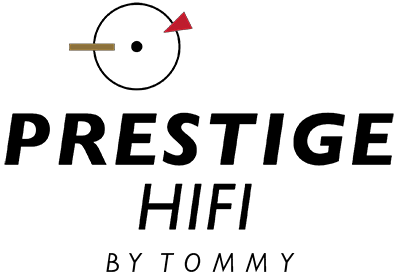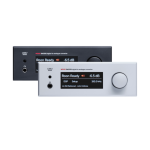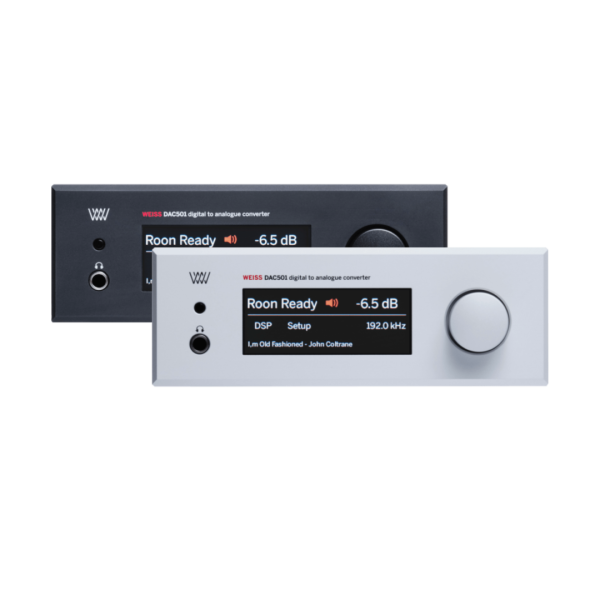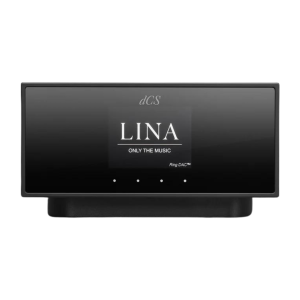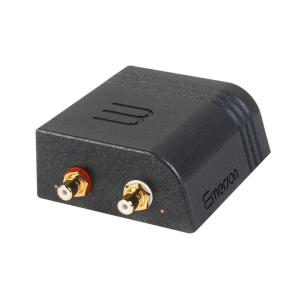Weiss-DAC 501 MK II
$****
Your gateway to perfect sound reproduction
Compact DAC, AUDIO PROCESSOR, AND NETWORK RENDERER
Unveil the true sound of the audio material with the compact DAC501 digital-to-analog converter. The DAC501 goes beyond simply reproducing your sound — it also lets you correct frequency imbalances in your room and adjust the sound to better suit your preference.
-
Description
-
Main Features
-
Technical Data
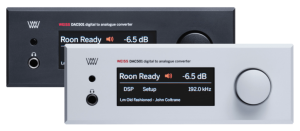
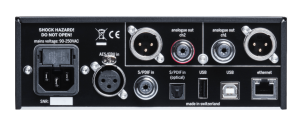
Your gateway to perfect sound reproduction
Compact DAC, AUDIO PROCESSOR, AND NETWORK RENDERER
Unveil the true sound of the audio material with the compact DAC501 digital-to-analog converter. The DAC501 goes beyond simply reproducing your sound — it also lets you correct frequency imbalances in your room and adjust the sound to better suit your preference.
Main Features
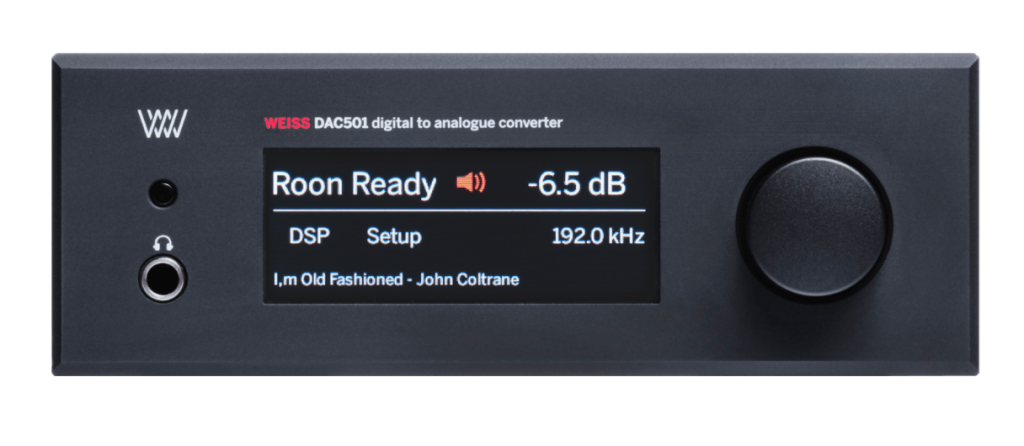
| Accurate and Adjustable | – The DAC501 is one of the best digital-to-analog converters, offering an accurate and soulful audio presentation. – Includes user-configurable settings: Room EQ, de-essing, crosstalk cancellation, dynamics compensation, loudness control, and vinyl emulation. |
| High Connectivity | – The DAC501 features multiple digital inputs and both balanced and unbalanced analog outputs. – Supports sampling frequencies up to 384 kHz, DSD x64 and x128. – Functions as a preamp, headphone amp, and streamer (UPnP/ROON). – Integrates with the JPLAY iOS app for Qobuz, Tidal, and local collection. |
| Helios 12 | – A four-channel version, called MK2, is available. – Standard two-channel units can be upgraded to MK2 for superior performance. – MK2 version description available for download. |
| DAC501 Product Comparison | – The DAC501 and DAC502 are identical except for the larger enclosure and extra 4-pin headphone socket on the DAC502. – Both models come in aluminum or black finishes. – The DAC501 includes all DSP features of the DSP501, which lacks the D/A conversion. |
| Purist Signal Path | – Uses dual 32-bit D/A converter chips, with two conversion channels per audio channel. – Includes an internal high-precision/low jitter clock generator for ultra-stable clocking of the D/A converter section. |
| Professional Processing | – Built-in audio processing uses Weiss Engineering’s professional algorithms. – Audio can be adjusted with professional-grade algorithms that were used to mix and master the original recording. |
| Ease of Use | – Comes with an IR remote control to select inputs, outputs, and DSP presets, and to switch power on/off. – Can be controlled and configured via a web browser for detailed DSP processing and preset management. |
Technical Data
| Digital Inputs | – Total of five inputs: – AES/EBU or S/PDIF via XLR, Toslink and RCA sockets. – UPnP/DLNA via Ethernet. – USB. – Roon Ready. – Accepted formats: PCM 44.1kHz up to 384 kHz, DSD 64x / 128x. – Future formats can be accommodated via software updates. |
| Analog Outputs | – Line out unbalanced on RCA connector. – Line out balanced on XLR connector. – Headphone out on 1/4″ jack. – Discrete output stages for both line and headphone outputs are employed. – Output levels can be set in a coarse manner with four steps for adaptation to amplifier or headphone. Levels can be set independently for line and headphone outputs. – No sound degrading servo mechanisms are used. |
| Digital Signal Processing | – Built-in DSP chip includes: – Room Equalizer – suppresses room modes for accurate bass reproduction. – Creative Equalizer – tone control with low boost/cut, high boost/cut, and mid boost/cut. – De-Essing – removes overly bright sibilances from human voices. – Constant Volume – adjusts loudness to a constant value across tracks. – Vinyl Emulation – emulates record player sound. – Crosstalk Cancelling (XTC) – for dummy head recordings or live recordings via speakers. – Loudness Control – volume-dependent equalization. – Headphone Equalizer – adapts headphones to listener’s ears. – Crossfeed – emulates speaker playback on headphones. |
| Front Panel Controls | – Rotary encoder knob for changing parameters and powering unit on/off. – Touch screen colour LCD display. – 1/4 inch headphone socket. – IR receiver. |
| Back Panel Elements | – Analog outputs on XLR and RCA connectors. – Digital inputs on XLR, RCA, TOSLINK, USB, and Ethernet connectors. – USB type-A connector for various applications. – Mains connector with fuses. |
| Dimensions | – DAC501: – Depth: 30 cm / 11.8 inches – Width: 18.8 cm / 7.4 inches – Height: 6.6 cm / 2.6 inches – Height with feet: 7.2 cm / 2.83 inches – IR Remote Control: – Depth: 2.1 cm / 0.83 inches – Width: 4.5 cm / 1.78 inches – Height: 16.6 cm / 6.53 inches |
| Power Supply | – Uses a powerful non-switching power supply. – Sensitive voltages have separate regulators for left and right channels. – Results in analog output free of “digital noise” and channel crosstalk. – Power switch activates a semiconductor relay, switching only at zero crossings of mains voltage. – Mains transformers are toroidal. – Mains voltage selection is automatic. |
Note: For more detailed product specifications, please refer to the user manual.
